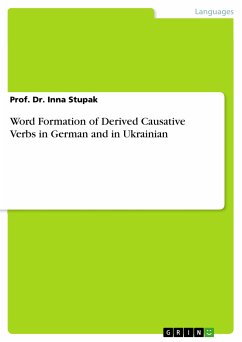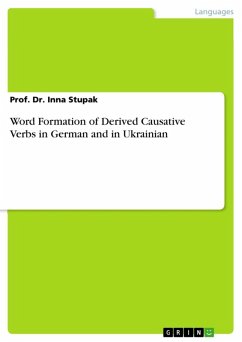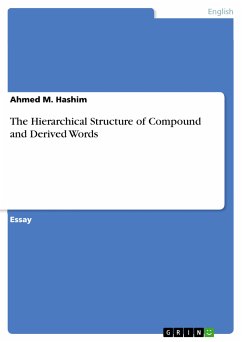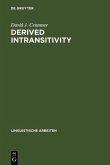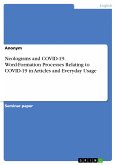Document from the year 2016 in the subject Speech Science / Linguistics, , language: English, abstract: The functional-semantic category of causativity can be expressed on different levels of the language system. However, one of the main lexical means of expressing causativity is considered to be causative verbs, the definitions of which are in part contradictory. Generally, linguists single out causative verbs as being those transitive verbs with the meaning of ‘changing a state’ or ‘causing an action’, which is expressed by a corresponding verbal stem. Taking this definition of causative verbs into account, in the article we refer to this group, verbs which cause a different action or state in, at least, two situations connected by causation relations and reflect cause-and-effect relations on a referential level. The object of this research is thus DCV (derived causative verbs) – verbs united by the general meaning of causativity, formed (in the paper, the terms “formed” and “motivated” are used synonymously) from motivated stems of different parts of speech with the aid of word forming means inherent to verb formation, i.e. units creating word forming category of causativity. The main empirical material is obtained by means of continuous sampling of DCV from definition dictionaries of the German and the Ukrainian languages. The results obtained from dictionary and text sampling were used to establish the productivity degree of certain DCV formation means and ways, semantic types in both languages, productivity correlation of DCV semantic types and their frequency.
Bitte wählen Sie Ihr Anliegen aus.
Rechnungen
Retourenschein anfordern
Bestellstatus
Storno

